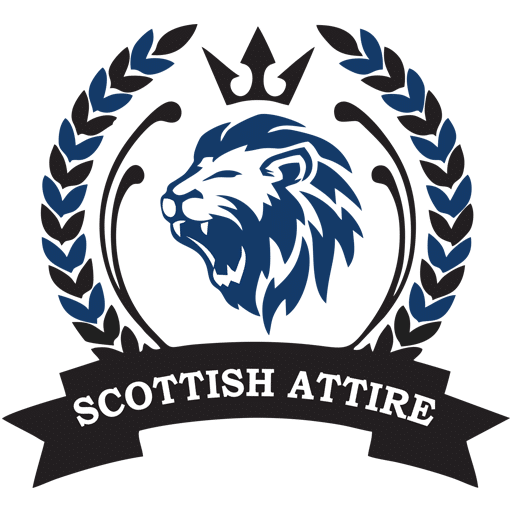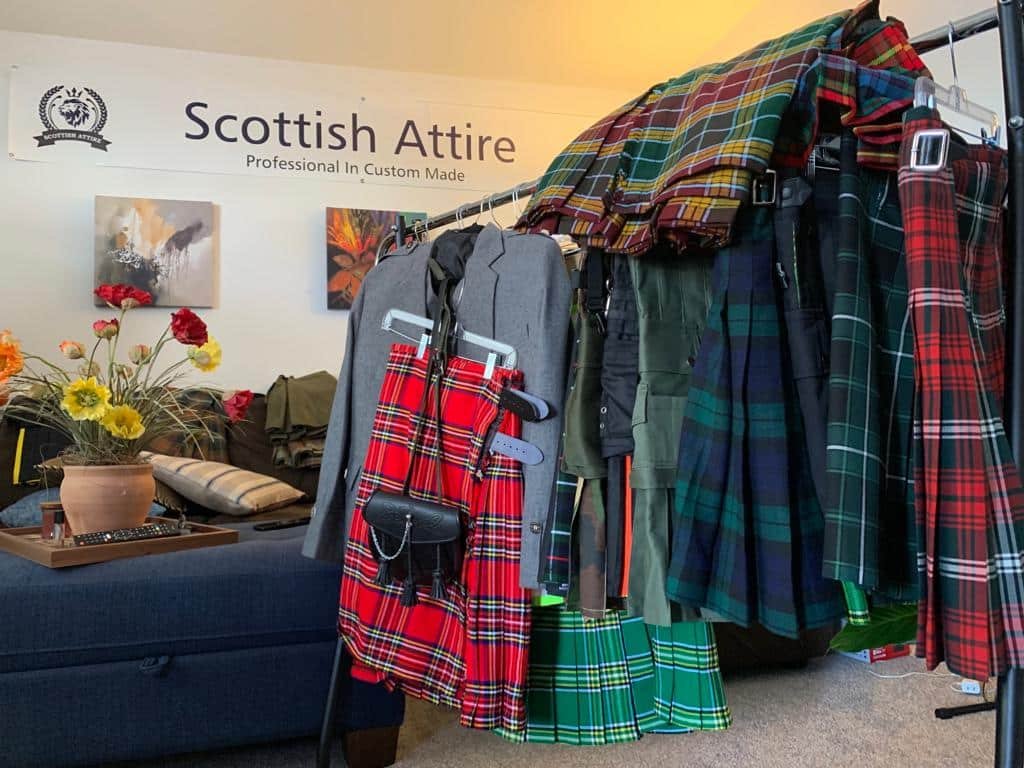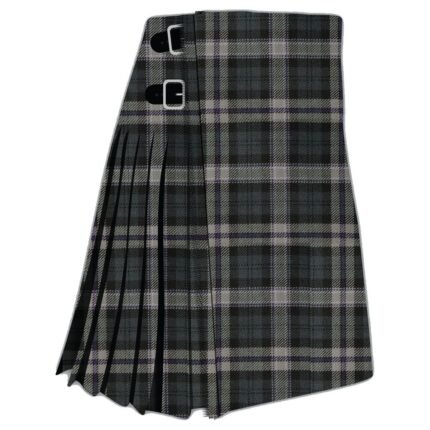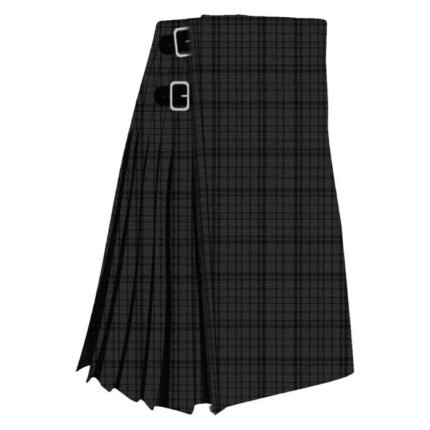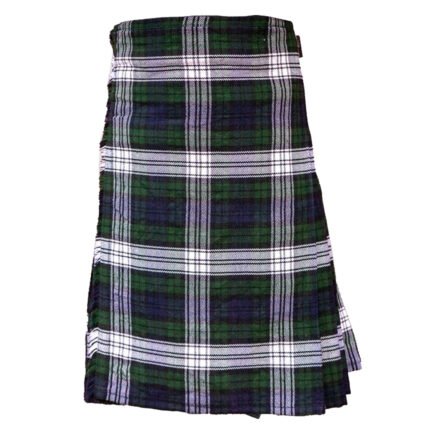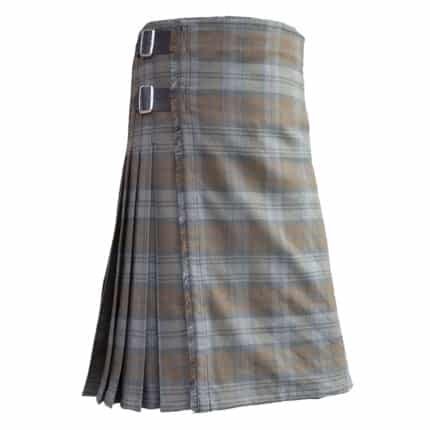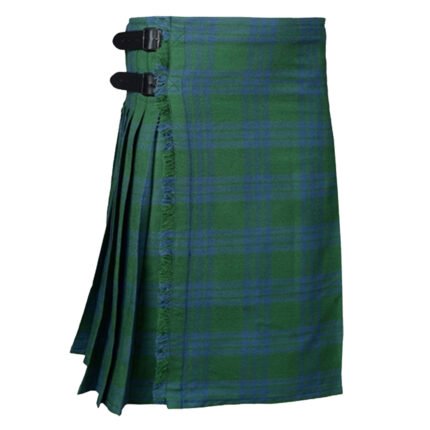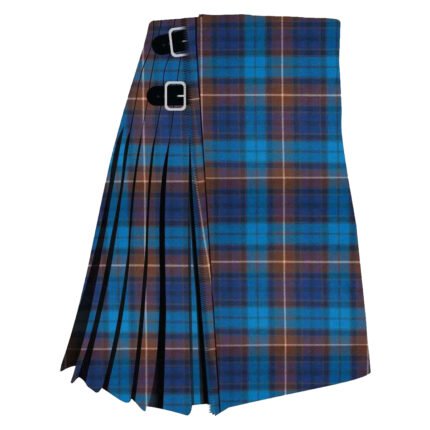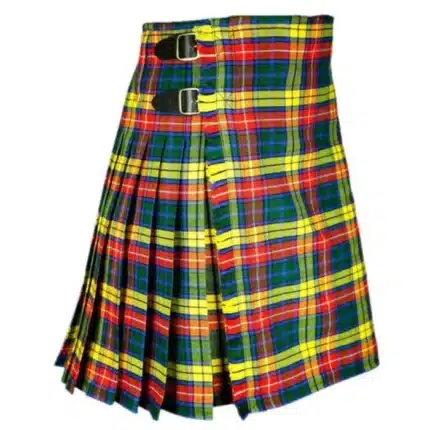Tartan, with its vivid hues, striking designs, and unique aesthetic, is globally associated with Scotland. Tartan may seem familiar to you, but its history is just as intricate and multifaceted as its famous fabric.
What is a Tartan?
It’s a piece of woven fabric with colored stripes running vertically and horizontally against a colored background. The term “sett” refers to the interwoven stripes. Originally, the clanspeople used berries, mosses, and local plants to dye the wool. Over 7,000 distinct tartans have been documented; Hello Kitty and the Obamas both have their own tartan!
Kilts: What are they?
A kilt is a piece of tartan worn around the waist; historically, it was known as the feileadh-mòr in Gaelic (pronounced philamore). A ‘proper’ kilt, however, is typically worn with:
- A small bag worn over the kilt and around the waist is called a sporran.
- The word for purse in Gaelic is sporran.Kilt pin: a large, heavy pin fastened to the kilt’s outer flap.
- Sgian dubh, pronounced skee-an-doo, is a tiny dagger that is concealed in a sock.
What is the History of Tartan?
From where did tartan originate?
Despite its strong link to Scotland, the oldest known tartan sample dates back to approximately 3000 BC and was discovered in China. However, its origins are deeply Scottish, dating back to the third or fourth century. Since then, we have used it to create fashion statements, bagpipes, rebellions, and kilts.
The Rebellion of the Jacobites
A few centuries later, tartan begins to truly take off in the fashion world. Imagine romantics in the windswept Highlands, completely covered in beautiful Scottish tartan. This common misconception about Scottish clans and their tartan was actually born out of clever Jacobite propaganda that crept its way into myth and legend.
In 1745, the roguish Jacobite hero of Scotland, Bonnie Prince Charlie, arrived in Scotland fully clothed in tartan. He used fashion to rally the ancient strength of the clans to fight for the throne. The Jacobite rebellion failed in the end, but tartan became so strongly associated with Scottish identity and rebellion that the British Government outlawed it after the Battle of Culloden in 1746.

Prince Charles Edward Stuart’s portrait at the Scottish National Portrait Gallery
Clans, Tartan, and Revival
The mid-1800s saw a resurgence of tartan, this time thanks to an outstanding branding campaign spearheaded by none other than Sir Walter Scott. When Sir Walter welcomed King George IV to Edinburgh in 1822, he insisted that clan chiefs wear their clan tartans and full Highland regalia. This visit was much-awaited. An excellent concept with only a small drawback—the majority of the chiefs had only recently discovered that they were expected to wear tartan unique to their clan. However, they proved themselves worthy of the occasion, presenting their ‘official’ clan tartans and securing the historical connection between clans and tartans.
King George was so enthralled with the fabric that he had a portrait painted of himself as a Stuart prince, complete with tartan kilt, cape, socks, and all. The campaign was a huge success. His niece, Queen Victoria, who made tartan the fashion statement it is today, inherited this fascination and the royal connection from him.
Tartan today
A couple is posing for a selfie at the Swilcan Bridge on the Old Course in St Andrews Tartan today, but the fabric’s legacy lives on throughout Scotland and the world. It has always been at the forefront of modernity—a tartan ribbon was featured in the first color photograph ever taken, and it has even gone to space!
You can find tartan in school uniforms just as easily as on a high-end fashion runway. The bold style and rebellious past of this fabric have drawn some of the biggest names in fashion to it in more recent times, including Chanel, Dior, Vivienne Westwood, and Alexander McQueen.
Conclusion
Because of its remarkable capacity to uphold and challenge tradition—sometimes even simultaneously—it has been embraced by numerous causes and organizations as a symbol of their moral principles and social consciousness. A tartan design was registered to symbolize the climate change summit, COP26, and it has been used to raise awareness of motor neuron disease (MND) in memory of the legendary rugby player Doddie Weir. It has also brought LGBTQ+ communities together through a shared identity. Additionally, 20% of all sales of the Homeless tartan benefit Shelter Scotland, a charitable organization.
For all socioeconomic classes, including the wealthy and the disenfranchised, tartan is an incredibly versatile, playful, and sophisticated fabric.
Frequently Asked Questions (FAQs)
Which Tartan may I wear?
Whether you are Scottish in your heart or by blood, tartan is for everyone! For most people, having a connection to the tartan they wear is important when selecting their tartan. Finding out if you are a member of a Scottish clan can be one of the easiest ways to make that connection. Choosing a tartan just because you like the colors and design is also totally acceptable. Traditions, not strict regulations, dictate what tartan is appropriate to wear. Wearing something that makes you feel proud is what matters most.
What varieties of Tartan exist?
Consider the following options when selecting your tartan or kilt:
Vegetable dyes from ancient times are used to create softer colors. This is a recreation of the method (using natural dyes) used to make tartan prior to the invention of chemical dyes. Darker colors are achieved by using modern chemical dyes. Reproduction/weathered: The colors are derived from tartan that has historically been discovered on battlefields or in homes. Dress: swap out one of the original subdued colors for white. Hunting: Use brown, blue, or green in place of one of the original under-check colors.
You found your tartan? Have you planned your outfit? Look for events in Scotland where you can wear it, such as Highland Games, Ceilidhs, and weddings. Don’t forget to tag us in your photos of Scotland. See our Tartan Kilt Shop.
-
Black Scottish National Tartan Kilt
Original price was: $99.00.$89.00Current price is: $89.00. -
Black Shadow Tartan Kilt
Original price was: $99.00.$89.00Current price is: $89.00. -
Black Watch Dress Tartan Kilt
Original price was: $99.00.$89.00Current price is: $89.00. -
Black Watch Weathered Tartan Kilt
Original price was: $99.00.$89.00Current price is: $89.00. -
Blue Douglas Tartan Kilt
Original price was: $99.00.$89.00Current price is: $89.00. -
Blue Green Montgomery Ancient Tartan Kilt
Original price was: $99.00.$89.00Current price is: $89.00. -
Brown Watch Tartan Kilt
Original price was: $99.00.$89.00Current price is: $89.00. -
Buchanan Blue Tartan Kilt
Original price was: $99.00.$89.00Current price is: $89.00. -
Buchanan Tartan Kilt
Original price was: $99.00.$89.00Current price is: $89.00.

